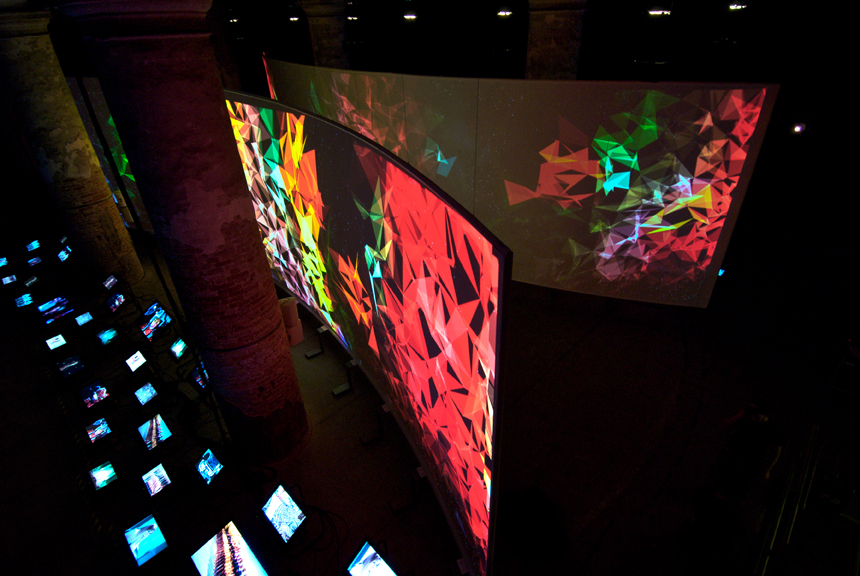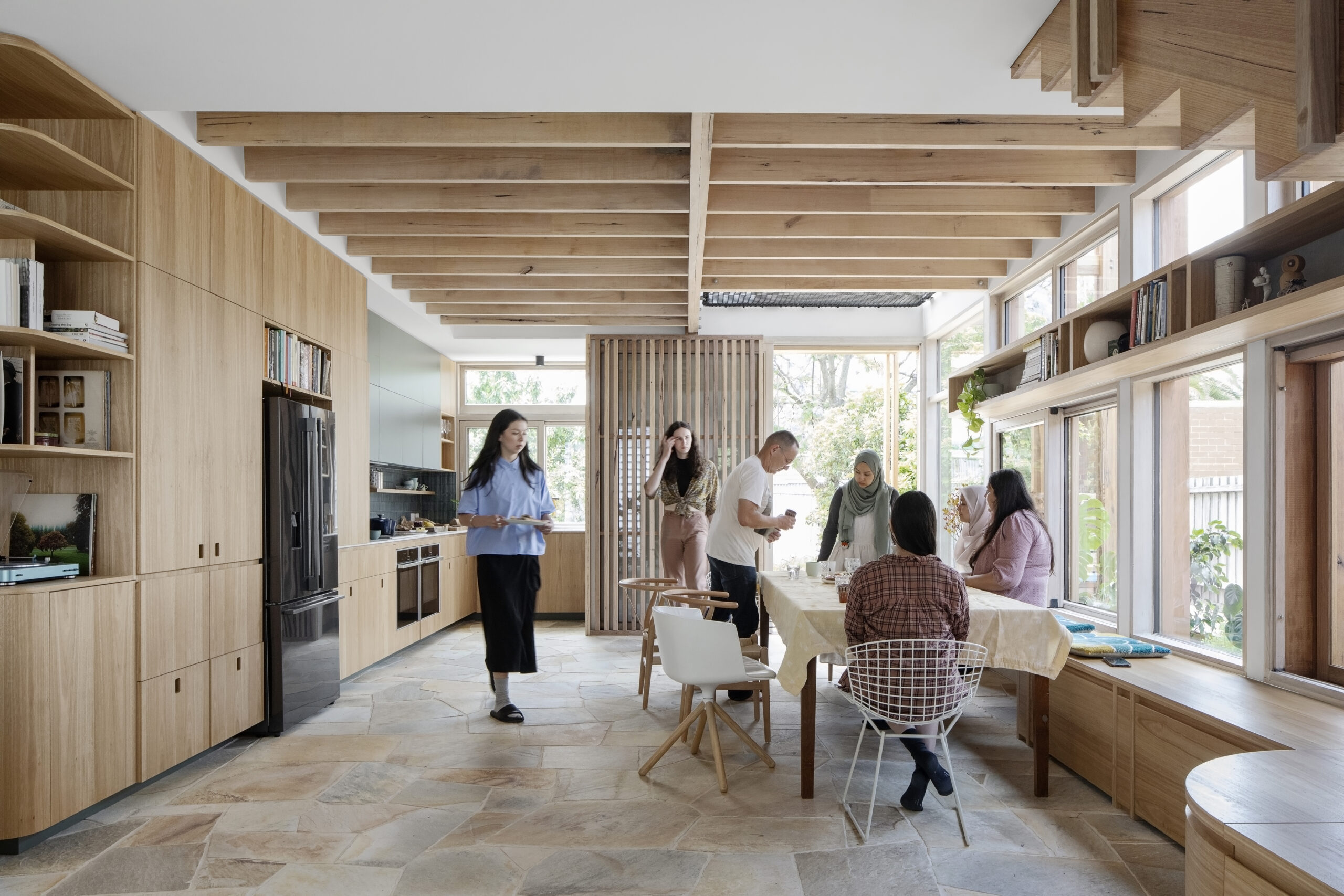Designing for the Future: How Today’s Tactical Transit Hubs Are Shaping Tomorrow’s Cities
From multimodal terminals to community-centric stations, these spaces are reimagining how architecture intersects with infrastructure. The post Designing for the Future: How Today’s Tactical Transit Hubs Are Shaping Tomorrow’s Cities appeared first on Journal.

Transit hubs are more than spaces for moving people — they catalyze growth, innovation and connectivity. As urban centers evolve to meet the demands of the 21st century, transit hubs play a pivotal role in shaping how people experience their cities and navigate their daily lives. From multimodal terminals to community-centric stations, these spaces are reimagining how architecture intersects with infrastructure, creating dynamic environments that foster sustainability, economic vitality and a sense of place.
The following projects highlight groundbreaking approaches to transit hub design, showcasing how architects are tackling the challenges of urban mobility while embracing opportunities for transformation. Whether it’s through integrating green technology, enhancing accessibility, or rethinking the relationship between public and private realms, these designs underscore the critical role transit hubs play in building resilient, future-focused cities. Each project tells a unique story of how thoughtful design can redefine not just how we travel, but how we live, work, and interact.
Ottawa Train Station and Via Rail Business Lounge
By Provencher_Roy, Ottawa, Canada

 The refurbishment of Ottawa Station, a 1966 International Style landmark and designated Heritage Railway Station, blends preservation with modern innovation to meet the evolving needs of the city it serves. Designed to enhance functionality and user experience, the project integrates history, architecture and engineering through thoughtful updates, including a revamped faćade, improved accessibility with elevators and raised platforms, and a luminous glass tower that reflects the station’s mid-century aesthetic.
The refurbishment of Ottawa Station, a 1966 International Style landmark and designated Heritage Railway Station, blends preservation with modern innovation to meet the evolving needs of the city it serves. Designed to enhance functionality and user experience, the project integrates history, architecture and engineering through thoughtful updates, including a revamped faćade, improved accessibility with elevators and raised platforms, and a luminous glass tower that reflects the station’s mid-century aesthetic.
The redesigned Business Lounge, tailored for a growing clientele, offers versatile spaces for work and relaxation, while new openings in the façade connect travelers to the rhythm of the railway and the surrounding urban landscape. This transformation reaffirms Ottawa Station as a vital intermodal hub and a gateway that resonates with the capital’s identity.
Hangzhouxi Railway Station
By CCTN Design, Hangzhou, China


 The West Railway Station Hub Complex in Hangzhou reimagines the traditional transit hub, blending innovative design with the cultural and geographical essence of the southern Yangtze River region. Inspired by the concept of “Cloud,” the project features elements like “Cloud Valley,” “Cloud Hall” and “Cloud Gate,” symbolizing the technological spirit of the Hangzhou West Innovation Corridor while enhancing connectivity and efficiency.
The West Railway Station Hub Complex in Hangzhou reimagines the traditional transit hub, blending innovative design with the cultural and geographical essence of the southern Yangtze River region. Inspired by the concept of “Cloud,” the project features elements like “Cloud Valley,” “Cloud Hall” and “Cloud Gate,” symbolizing the technological spirit of the Hangzhou West Innovation Corridor while enhancing connectivity and efficiency.
A central entry corridor shortens passenger transit time, and arched dome skylights flood the space with natural light, creating a welcoming and energy-efficient environment. Integrating office and hotel functions above the canopy, the hub seamlessly connects business, travel and urban life, underscoring its role as a vital node in Hangzhou’s growth.
Lorient Bretagne-Sud Railway Station
By Arep Group, Lorient, France

 The Lorient multimodal hub, part of the “Bretagne à Grande Vitesse” project, connects the city to Paris and regional destinations through a high-speed rail network while reinforcing its urban fabric. Positioned near the city center, the station integrates rail, buses and pedestrian pathways, including an urban walkway linking the Kerentrech district to central Lorient.
The Lorient multimodal hub, part of the “Bretagne à Grande Vitesse” project, connects the city to Paris and regional destinations through a high-speed rail network while reinforcing its urban fabric. Positioned near the city center, the station integrates rail, buses and pedestrian pathways, including an urban walkway linking the Kerentrech district to central Lorient.
The design reflects the city’s shipbuilding heritage with a striking timber portal frame and facades inspired by Lorient’s architectural traditions, blending stone, concrete and fiber-reinforced materials. Large glazed sections provide natural light and views of key urban and historic areas, creating a dynamic and efficient transit hub tailored to the city’s unique identity and future growth.
Salvador Bahia Metro Station
By JBMC Architects, Salvador, Brazil

 The Salvador Metro Line 2 transforms urban mobility in Brazil’s first capital by addressing the city’s unique geography of hills and valleys while honoring its rich cultural heritage. Designed to ease traffic congestion and connect key areas, the project includes 12 metro stations, three bus terminals, and a landscaped corridor with parks and bike paths along the central Paralela Avenue.
The Salvador Metro Line 2 transforms urban mobility in Brazil’s first capital by addressing the city’s unique geography of hills and valleys while honoring its rich cultural heritage. Designed to ease traffic congestion and connect key areas, the project includes 12 metro stations, three bus terminals, and a landscaped corridor with parks and bike paths along the central Paralela Avenue.
Each station balances site-specific conditions with a cohesive system design, featuring sustainable prefabricated construction, natural ventilation and shaded areas to suit Salvador’s tropical climate. The vaulted roofs and vibrant design ensure the stations serve as functional transit hubs while acting as striking landmarks that integrate seamlessly into Salvador’s cultural and urban landscape.
Transport Hub
By RYSY Architekci, Solec Kujawski, Poland


 The Solec Kujawski transport hub, completed in 2016 as part of Poland’s BiT City high-speed rail network, seamlessly integrates into its local landscape while connecting the region’s capital cities, Bydgoszcz and Toruń. Designed by RYSY Architekci, the hub transforms an area of fragmented urban elements and a small hillside with an old railway platform into a cohesive and functional space.
The Solec Kujawski transport hub, completed in 2016 as part of Poland’s BiT City high-speed rail network, seamlessly integrates into its local landscape while connecting the region’s capital cities, Bydgoszcz and Toruń. Designed by RYSY Architekci, the hub transforms an area of fragmented urban elements and a small hillside with an old railway platform into a cohesive and functional space.
A unified roof covers its key facilities, including a bus station, railway platforms and traveler services, while the sloped trackway has been reimagined as a green amphitheater with seating, enhancing the public realm. With its light and simple design, the hub not only supports efficient transportation but also serves as a welcoming urban square, blending harmoniously into the city’s fabric and offering a vibrant space for both passengers and the community.
Pioneer Village Subway Station and Bus Terminal
By Arcadis, Toronto, Canada

 Pioneer Village Station, part of the Toronto-York Spadina Subway Extension, serves as a striking civic landmark at the northwest corner of York University Campus, bridging Toronto and York Region. Designed to revitalize an underserved area and support future development, the station maximizes pedestrian access and visibility with its mirrored sculptural entrances spanning Steeles Avenue West.
Pioneer Village Station, part of the Toronto-York Spadina Subway Extension, serves as a striking civic landmark at the northwest corner of York University Campus, bridging Toronto and York Region. Designed to revitalize an underserved area and support future development, the station maximizes pedestrian access and visibility with its mirrored sculptural entrances spanning Steeles Avenue West.
The design, led by IBI Group, LEA Consulting Ltd., and WSP with input from Will Alsop, features weathering steel facades and a dramatic underground concourse. The concourse reimagines traditional station design with a flowing, column-supported space that guides passengers seamlessly from platform to entrance, creating a unified architectural experience tailored to its urban context. Architects: Want to have your project featured? Showcase your work through Architizer and sign up for our inspirational newsletters.
The post Designing for the Future: How Today’s Tactical Transit Hubs Are Shaping Tomorrow’s Cities appeared first on Journal.
What's Your Reaction?


















































